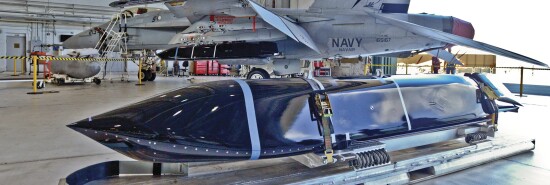
Pentagon’s boosted missile buys are insufficient to meet China’s threat
Tom Rogan
The Biden administration has unveiled the details of its fiscal 2024 defense budget request to Congress. Officials are proclaiming big boosts to long-range weapons purchases, an undoubted priority in facing China’s likely looming invasion of Taiwan.
Unfortunately, the purchases still fall far short of what’s needed.
On paper, the boosts look positive. As Defense News notes, the U.S. will buy 103 Naval Strike Missiles, 48 Joint Strike Missiles, 550 JASSM-ER missiles, and 118 LRASM missiles. The Navy will also get another 125 RIM-174 anti-air missiles. The Pentagon says these purchases push production limits to the maximum. But that’s the whole problem: the U.S. defense production capacity is utterly insufficient to the military threats that China imposes.
The People’s Liberation Army has a large and rapidly growing array of warships, fighter aircraft, and long-range missiles of various types. Some of these, such as the Type-055 air defense destroyer, are exceptionally capable. The PLA has potent space-based capabilities. And in any war over Taiwan, PLA forces would have distinct advantages over the U.S. military in terms of the distances between the fight and home bases for refueling and rearmament (the Biden administration deserves credit for reaching a deal with the Philippines that might allow U.S. forces to operate from that nation).
U.S. UNPREPARED AS CHINA BOOSTS PREPARATIONS FOR TAIWAN WAR
Top line: the U.S. must max out its buys of long-range anti-ship and anti-air missiles but also significantly expand the production bases for those missiles. There are real challenges in the military-industrial base, but China requires the U.S. government to act with urgency. Put simply, it must throw billions of dollars at Lockheed Martin to build more factories, input materials, etc., from which more LRASM and JASSM-ER missiles can be built. Lockheed’s F-35 fighter jet is unsuited to the China challenge, but the company’s missiles may be the key factor in any war with China. Scale matters.
This is not to say that the defense request is without positives. There are significant new investments for Guam’s missile defense, for example. This is crucial in that Guam would serve as a centerpiece forward operating base for U.S. warships and long-range bombers. An increase in orders for the F-15EX strike fighter is also welcome.
Still, this budget does not meet the urgency of the moment. While the Biden administration is saluting itself for proposing a 4.92% increase in the Navy and Marine Corps budgets, that figure — like the defense budget at large — is below the current 6.4% inflation rate and only represents a marginal real increase if you buy the Congressional Budget Office’s 2024 projection of a 2.4% inflation rate.
Rather than tinkering around the edges of the defense budget, Washington needs to sound general quarters.
